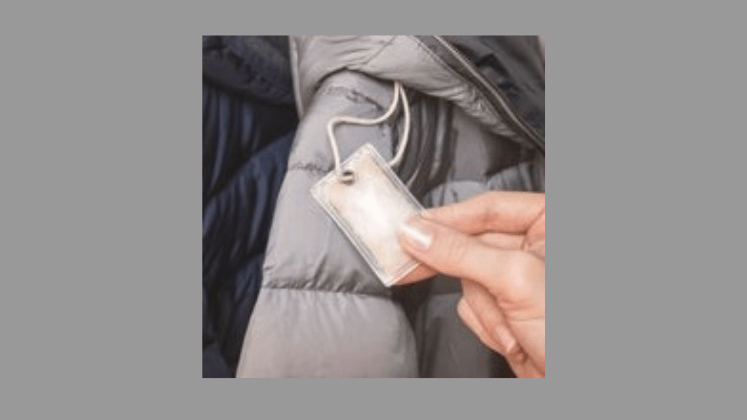2022 has been a fairly good year for the fashion retail world across the globe so far – at least that’s what the numbers are talking. At the start of the year, in one of our features, we had distinctly presented how the apparel industry is in a good position to survive and succeed this year despite all constraints.
As we enter the second half of the year, the industry seems to be on its way to prove how successfully it has been able to navigate all the challenges – be it the initial Omicron scare or the ongoing Russia-Ukraine conflict – and, importantly, excel in all aspects.
US fashion retail on growth trajectory
The numbers are good everywhere! The retail sales are getting better as imports are improving in the US. During 2021, US apparel retail sales revenue (collectively in stores and e-commerce) was US $ 264.05 billion, noting significant increase of 36.37 per cent over 2020. On the other hand, apparel imports of the USA valued US $ 81.59 per cent, growing by 27.36 per cent on Y-o-Y basis.
Importantly, the growth continues even in 2022. A closer look at the recent apparel retail sales scenario in the US reiterates, on YTD basis, that the apparel retail sales have surged by 13.76 per cent in January to April ’22 to US $ 81 billion as compared to US $ 71.20 billion in the corresponding period of 2021. As far as imports are concerned, January to April 2022 period, as per OTEXA, saw US apparel imports clock US $ 32.43 billion at a Y-o-Y growth of 40.55 per cent.
There has been a significant contribution of India and Bangladesh in the growth of US apparel imports and retail market. The share of Bangladesh and India during 2021 import values of USA were US $ 7.15 billion (up 36.71 per cent) and US $ 4.19 billion (up 38.74 per cent), respectively, whereas the same stood at US $ 3.30 billion (up 65 per cent) and US $ 2.10 billion (up 56 per cent), respectively, in the first four months of 2022.
“This performance is just the beginning of our multi-year journey to execute the PVH+ Plan – our strategic growth plan that we unveiled at our recent Investor Day. The plan is centered around winning the consumer through our brand-focused, direct-to-consumer and digitally-led approach across each of our regions to unlock the full potential of our two global iconic brands, Calvin Klein and Tommy Hilfiger” – Stefan Larsson, CEO, PVH Corp.
It’s not surprising to see these good numbers. Here it is worth stating that of all the reasons which have contributed to the impeccable growth, the most important have been pent-up demand, wage growth and panic buying/revenge buying – not to mention the continued re-opening of the economy across the US and the UK. Notably, consumers have been maniacally buying dresses for events and gatherings. Also, novelisation in the inventory build-up within the supply chain, as per industry experts, too has been instrumental in the growth of retail sales.
Notably, of all products that sold well in the US during 2021, the top five are listed in Table 1 below. Since companies went for hybrid working model in 2021 due to uncertainty caused by the pandemic, both casual (T-shirts, denims, jackets) and formal products (trousers, blazers) remained in good demand all through the year – which continues in 2022.
| Table 1: Apparel products that USA sourced hugely in 2021 | |||||
| Products | 2020 | 2021 | % Change | Share of India (in 2021) |
Share of Bangladesh (in 2021) |
| T-shirts | 16,629.84 | 22,226.37 | 33.65 | 1,042.33 | 1,161.72 |
| Trousers | 14,784.69 | 19,623.66 | 32.73 | 468.66 | 3,055.48 |
| Jackets & Blazers | 5,619.33 | 6,407.72 | 14.03 | 144.87 | 551.65 |
| Undergarments | 2,968.96 | 4,261.85 | 43.55 | 359.89 | 389.86 |
| Denim Apparels | 2,802.03 | 3,680.68 | 31.36 | 45.93 | 798.42 |
Source: OTEXA
Values in US $ million
Compiled by: Apparel Resources
And the American fashion retailers have all the numbers to show! Macy’s, the reputed clothing giant, has reported Q1 net income of US $ 286 million at a massive growth of 178 per cent. Thanks to its Polaris turnaround strategy, the Q1 sales too rose by 13.6 per cent to US $ 5.3 billion. With the gross profit margin rising by almost 40 per cent, Macy’s now has plans to diversify with an online marketplace that will comprise third-party merchants selling via Macy’s and Bloomingdale’s sites.
Abercrombie & Fitch Co too has seen its Q1 net sales (ended 30 April 2022) beat all predictions by clocking US $ 813 million at a growth of 4 per cent – its highest first quarter since 2014. The retailer attributed the impressive numbers to strong performance of the Abercrombie & Fitch brand, not to mention its efforts to reduce promotional activity that has helped improve numbers.
Substantiating further, Fran Horowitz, CEO, Abercrombie & Fitch, said, “We will continue to manage expenses tightly and are committed to finding opportunities to offset these costs while protecting strategic investments in marketing, technology and our customer experience, which should drive sustained, long-term sales growth.”
Globally renowned US clothing firm PVH Corp. has seen its Q1 revenue go up by 7 per cent to post US $ 2.12 billion. Strong sales in the US have helped the company gain big despite slowdown in China.
Brand-wise, while Calvin Klein’s revenue in the USA grew by 13 per cent, with its international revenue growing by 7 per cent,Tommy Hilfiger saw its overall revenue rise by 2 per cent. The Group is now confident of attaining annual sales of US $ 12.5 billion despite ongoing supply chain challenges, the Russia-Ukraine conflict and lockdowns in China.
Guess too saw its first quarter revenue surge by 14 per cent to US $ 593.5 million – all thanks to licensing sales and Americas wholesale revenues. The Q1 retail sales (including e-commerce) for the retailer rose by 3 per cent, with Americas’ retail revenue going up by 7 per cent. Moving forward, Guess now expects FY ’23 revenue to grow by 10 per cent.
Similarly, another apparel retailer Urban Outfitters’ Q1 sales shot up by a good 13.4 per cent to post £ 838 million. The retailer said that owing to increased store traffic, the quarter that ended 30 April 2022 saw its net sales grow by 12 per cent. Brand-wise, Anthropologie Group’s comparable retail segment net sales grew by 18 per cent, while the same at Free People Group rose by 15 per cent. At Urban Outfitters, it was a rise of 1 per cent.
Then there’s Dillard’s whose Q1 retail business grew by 22 per cent to US $ 1.6 billion, with the net income touching a decent US $ 251.1 million at a growth of 59 per cent. Notably, its same store sales shot by 23 per cent Y-o-Y! However, what’s noteworthy is that the Q1 revenue was heavily boosted by strong sales in men’s apparel and accessories, women’s apparels as well as kids’ apparels.
Just like Abercrombie & Fitch, it’s been record breaking period for North American brand Lululemon as well. The Canadian-American retailer has surpassed its sales for the first time ever in 2021, with its Q4 revenue surging by 23 per cent to £ 1.59 billion. Going forward, Lululemon expects – for the 2022/23 financial year – the net revenue to be somewhere between £ 5.7 billion and £ 5.79 billion, at a growth rate of around 22 per cent.
UK and EU too on the road to recovery and growth
The scenario is no different in the UK as well, where the fashion retailers seem to be, on the whole, quite satisfied with the way the year is turning out to be.
During 2021, UK’s clothing imports reduced to £ 20.80 billion (down 9.50 per cent); however the apparel stores’ retail sales grew by an impressive 15 per cent to £ 38.10 billion! On YTD basis in 2022, the imports rose by 39 per cent on Y-o-Y basis in January to February ’22 to value £ 3.70 billion, whereas the apparel sales in stores of the UK rose by a massive 58 per cent to £ 12.50 billion in the first two months of 2022, as per the latest data available on Office of National Statistics, UK. As per Eurostat, EU apparel imports in 2021 increased by 5.60 per cent to € 72.30 billion after a massive slump recorded in 2020 due to COVID-19. Bangladeshi exports to EU regained in 2021 to reach € 14.30 billion. Its share in European imports in 2021 was close to 20 per cent.
Between 2007 and 2021, Bangladesh’s exports to EU have multiplied by nearly four times! Though India does not benefit from any customs advantages in the European market, its clothing exports still grew by over 15 per cent in 2021 over 2020 to € 3.40 billion.
“We will continue to manage expenses tightly and are committed to finding opportunities to offset these costs while protecting strategic investments in marketing, technology and our customer experience, which should drive sustained, long-term sales growth” – Fran Horowitz, CEO, Abercrombie & Fitch
The year 2022 too has started well. EU’s apparel imports during January to March 2022 were almost 30 per cent higher to € 21.70 billion when compared to what it was last year in the corresponding period. Bangladesh and India shipped € 4.77 billion and € 1.10 billion worth of apparels to the EU market during Q1 ’22, respectively. The rising imports too opened doors for better retail sales and that was evident in the data. The European apparel retail market had total revenues of € 330 billion in 2021.
Expectedly, the retailers, across the UK, have numbers to complement the consistent apparel sales growth in the country. Gymshark, the British athleisure brand, recently came up with its annual report wherein it showed sales rise of 54 per cent to £ 402 million in 2021. Back in 2020, the brand’s sales had touched just £ 260.7 million.
Burberry, the renowned luxury brand from the UK, too saw its revenue go up by 21 per cent to £ 2.8 billion for the year ended 2nd April 2022. Its adjusted operating profit went up by 38 per cent to £ 523 million during the year. It’s noteworthy that continued investment in outerwear and leather goods led to growth in its full-price sales of 39 per cent and 28 per cent, respectively.

Some have ventured into new product categories too!
Buoyed by good numbers, quite a few clothing retailers have been foraying into new launches and product categories as well. The British clothing e-tailer JD Williams launched a new brand Anise in May 2022, which will enable customers to add more sustainable clothing options to their wardrobes – importantly, without compromising on design, fabric or quality.
N Brown, which owns JD Williams, has said that its focus to continue growing through its strategic brands like JD Williams will help it to boost simplicity and rigour of execution and deliver strong customer propositions and efficiency in its marketing.
Joe Browns, too in May 2022, unveiled its maiden recycled swimwear range – manufactured in a polyester fabric made from recycled plastics.
Then there’s Daisy Street, the notable young fashion womenswear online retailer, and ultrafast fashion biggie Asos which have expressed their plans to relaunch the womenswear brand Tammy Girl. As per media reports, Daisy Street has bought the licensing rights for Tammy Girl for an undisclosed sum. Following this, it relaunched Tammy Girl as a 32-piece capsule collection on Asos’ website.
One also saw womenswear brand Whistles foray into kidswear segment this April with easy-to-wear denim and casual sweatshirts that garnered positive response from all.
The fashion retailers in Europe seem to be regaining the old charm. Take for instance, Aeffe, the reputed Italian clothing retailer, which witnessed its Q1 revenue surge by 26.8 per cent to clock € 101.6 million. What’s noteworthy is that the fashion retailer increased its revenue by almost three times – from € 3.7 million in the first 3 months of 2021 to € 8.9 million. That’s equivalent to 8.8 per cent of revenue.
Notably, outstanding sales growth in the US helped Aeffe improve the numbers in its overseas markets, though its growth slowed down in China for obvious reasons. Benefits related to the structural efficiency of the business model implemented, over the last two years, were also instrumental in getting good numbers for the Moschino-owned brand.

US $ 2.12 billion
Another Italian luxury group Tod’s also had a brilliant first quarter with the sales going up by 23 per cent to clock € 219.6 million and beating all analysts’ predictions. Diego Della Valle, Chairman and CEO, Tod’s, corroborated, “The revenues of our stores were particularly good; in this quarter, they have been double-digit higher than in the first quarter of 2019, thanks to the investments made in the distribution network and an accurate communication, marketing and CRM policy.”
German fashion house HUGO BOSS too has posted currency-adjusted sales increase of 52 per cent to € 772 million in the first quarter of 2022. Europe saw the retailer’s currency-adjusted sales go up by 69 per cent Y-o-Y, whereas the same was 21 per cent up on a three-year basis.
“The first quarter of 2022 confirmed the trends of the financial year 2021 with a significant growth in revenues and a more than proportional progression in profitability, results obtained thanks to the good performance of all our brands together with the benefits related to the structural efficiency of the business model implemented over the last two years” – Massimo Ferretti, Executive Chairman, Aeffe Spa
Some analysts believe HUGO BOSS’ well-executed re-branding strategy appears to be bearing fruit and so it wasn’t surprising to see the retailer witness its strongest ever first quarter till date – from a top-line perspective. The re-branding, introduced in January 2022, included two global star-studded campaigns, a complete website revamp and a shift towards more casual designs.
Similarly, German sportswear brand PUMA has said that high demand more than offset the effect of supply chain issues and the war impact. Consequently, its Q1 operating profit went up significantly by 27 per cent to € 196 million, which is more than the analysts’ prediction of € 181.5 million. It registered sales of €1.91 billion at a growth of 19.7 per cent. Its net earnings grew by 11.2 per cent during the quarter to clock € 121 million.
Then there’s Hermès, the French luxury house that has seen its Q1 sales rise by 33 per cent at current exchange rates to clock € 2.765 billion. The retailer has attributed the good numbers to dynamic sales in its own stores, particularly in the US and Europe – all owing to acceleration in all the business lines.
April and May, on the whole, have been more than satisfactory for the clothing retailers across the US, UK and Europe and that’s enough to indicate the second half is only going to get better. And it isn’t different in Japan as well.
Japan, after recent fluctuations, is all set to pick pace in 2022
Japan – the third largest apparel market in the world – fluctuated in its apparel retail sales and imports from 2019-2021. In 2021, the imports of Japan fell by around 1 per cent to US $ 23.80 billion! The decline is continuing even in 2022 as, till March ’22, Japan has noted a drop of 0.7 per cent to import US $ 5.90 billion worth of apparels.
However, despite the slump, the projections from mid-2022-2026 are all positive. Currently standing at US $ 86 billion, the apparel retail market of the country is poised to grow at a CAGR of 4.13 per cent till 2026.
The signs of improvement could be seen in April data as chain stores, associated with Japan Chain Stores Association (JCSA), have seen sales of apparels growing on Y-o-Y basis. The apparel sales stood at 66,200.27 million yen (US $ 518.57 million) in April ’22, increasing by 7.30 per cent on Y-o-Y basis. Of all three product categories, menswear remained positive both on yearly and monthly basis, while womenswear and kidswear (including other types of apparels) managed to stay positive on yearly note.
Similarly, stores associated with Japanese Department Stores Association (JDSA) saw total apparel revenues of US $ 819.88 million, noting 23.80 per cent Y-o-Y surge in April ’22.
Fashion retailers have also had a good year so far! Uniqlo’s growth in May 2022 is enough to substantiate the fashion retail growth in Japan. The renowned Japanese clothing retail giant witnessed its same-stores sales in the country – which includes online – grow by 17.5 per cent in the month of May. The growth, which started for the retailer in April 2022, continued in May as well!
The fast fashion biggie saw its total sales for the month rise by an even better – and bigger – 19.8 per cent. It attributed the impressive numbers to Uniqlo anniversary sales, besides the Golden Week. Strong sales of core summer range of collections have also been instrumental in bettering the numbers for the fashion retailer.
“Supported by our bold branding refresh, momentum for BOSS and HUGO has accelerated around the globe. Together with the ongoing rigorous execution of our ‘CLAIM 5’ strategy, this provides us with strong tailwinds to achieve record sales in fiscal year 2022” –Daniel Grieder, CEO, HUGO BOSS
In April too, the retailer’s same-store sales had risen by 19.2 per cent. The other brand GU saw its like-for-like sales rise by 70 per cent in April after having spiked by that much in March. The GU chain, which has generally been seen as Uniqlo’s response to Gap’s Old Navy, is enjoying outstanding growth after the introduction of jeans worth 990 yen (US $ 10) – nearly a quarter of those at Uniqlo.
It’s been a decent first half so far for the clothing retailers across the globe. However, continual efforts to meet inclusivity and personalisation through latest technologies and sustainable business practices should help set the future of fashion retail.
Growth is there, but maintaining the momentum is key
Though the future speaks only growth and prosperity, quite reminiscent of the good old pre-pandemic days, there’s still some scepticism about how the subsequent months will be in terms of sales. As this piece gets written, one gets to hear about US retailer Target cancelling orders of home textiles and apparel from suppliers, and slashing price to clear out amassed inventory ahead of the critical fall and holiday shopping seasons.
“The strong growth in sales at the beginning of this year reflects the desirability of our collections and the confidence of our customers in our artisanal and responsible approach. Despite a still uncertain context, the group is accelerating its strategic investments, recruitments and training to support the growth of all the métiers of the house” – Axel Dumas, Executive Chairman, Hermès
If media reports are to be believed, some other fashion retailers like Gap and Walmart too have been talking about rising inventories. Consequently, the numbers may or may not be as good as it’s been so far in July and August 2022, but then that will be temporary as many analysts and experts believe the scenario to change for good before the onset of the holiday season.
It will be interesting to see the developments in the second half. Occasional hiccups and constraints notwithstanding, the overall fashion retail numbers – in all likelihood – should be on the brighter side by the year end.







